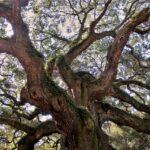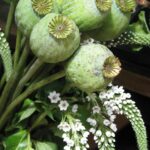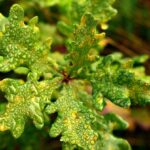How to Grow Live Oak Trees: Planting & Care Tips
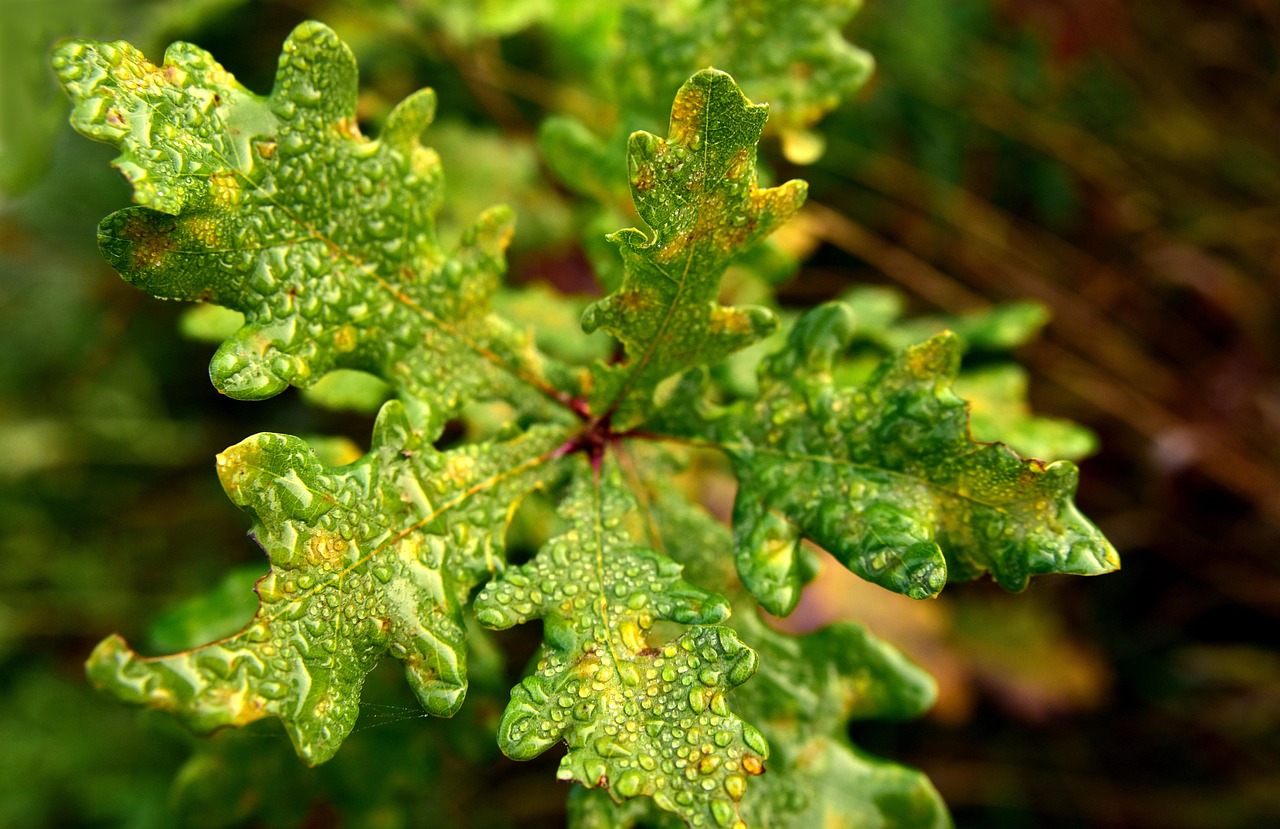
Growing a live oak tree can be a rewarding experience, and I’ve found that success really comes down to a few key things. It’s not overly complicated, but paying attention to the details makes a big difference. When I first started thinking about how to grow live oak trees, I was a bit overwhelmed, but breaking it down made it manageable.
How to Grow Live Oak Trees Successfully
First off, picking the right spot is important. These trees get massive, both in height and spread, so you need to give them plenty of room. I learned that planting them too close to buildings or sidewalks can cause problems down the line as their roots spread. Think about the mature size – easily 60 feet tall with a 120-foot spread. It’s a commitment, but worth it for the shade and beauty they provide.
When it comes to planting, the general advice is to prepare a hole that’s wider than the root ball. I always make sure the ‘root flare’ – where the trunk starts to widen at the base – is just at or slightly above the soil level. This helps prevent rot. After placing the tree, I backfill with soil and water it in well. Adding a layer of mulch around the base is also a good idea; it helps keep the soil moist and suppresses weeds. Keeping young trees watered until they’re established is key.
- Site Selection: Choose a location with full sun and well-drained soil. While they are tough and can tolerate less ideal conditions, optimal growth happens with good sun exposure.
- Planting Time: Fall is generally the best time to plant in most temperate regions, though this can vary. Check with your local extension office for specific advice for your area.
- Watering: Water regularly until the tree is well-established. Once mature, they are quite drought-tolerant, but supplemental watering during dry spells is still a good practice.
I’ve also learned that pruning early on is quite beneficial for developing a strong structure. It’s recommended to prune young trees regularly for the first few years to establish good form. This can prevent issues later, like branches breaking in storms. For more detailed advice on pruning, you can look into resources like expert advice on growing live oaks.
It’s important to remember that while live oaks are hardy, they can be susceptible to certain diseases like oak wilt. Taking precautions, such as cleaning the pruning tools, can help prevent the spread of such issues. Being aware of potential problems is part of successful long-term care.
Ultimately, how to grow a live oak tree successfully involves giving it space, planting it correctly, and providing consistent care, especially when it’s young. They are truly magnificent trees that, with a little attention, can thrive for centuries.
Selecting the Right Live Oak Species & Site for Growth
When I think ofhow to grow live oak trees, the first thing I had to figure out was where it would actually go. These trees get massive, and I mean massive. I’m talking about a potential spread of 100 feet or more, with a trunk that can reach 6 feet across. So, picking the right spot is pretty important if you don’t want it to take over your entire yard or, worse, end up damaging your house or sidewalks down the road. I learned that you really need to give it plenty of room to spread out its branches and roots.
It’s not just about space, though. Live oaks, or Quercus virginiana as they’re scientifically known, are native to the warmer, lower areas of the southern United States. They really do best in places that are humid and not too cold. While they can handle a bit of shade once they’re established, they absolutely love full sun. They’re also pretty tough and can deal with different kinds of soil, even sandy or compacted stuff, and they’re surprisingly good at handling dry spells once they’ve settled in. They can even tolerate salt spray if you live near the coast.
There aren’t a ton of different types of live oaks, but there are a few cultivars that have been developed for specific landscape needs. For instance, ‘Highrise’ is a more upright variety, good for smaller yards or street planting, growing to about 40 feet tall and spreading 18 feet. If you want something with a bit more spread, like the classic look, ‘Cathedral’ is a good choice, reaching around 35 feet tall with a 20-foot spread. For those with large properties, ‘Millennium’ and ‘Sky Climber’ are options that get closer to the full, majestic size of the species, with spreads up to 100 feet.
Here’s a quick look at some common types:
- Quercus virginiana (Species Live Oak): The classic, massive shade tree with a wide, spreading canopy. It can reach 40-80 feet tall and spread 100 feet wide.
- ‘Highrise’: Bred for a more upright and compact form, suitable for tighter spaces. Grows to about 40 feet tall and 18 feet wide.
- ‘Cathedral’: Offers a more spreading habit than ‘Highrise’, good for shade and privacy. Typically 35 feet tall with a 20-foot spread.
- ‘Millennium’: Similar to the species but with larger leaves and a thicker trunk. It can reach 75 feet tall and spread 100 feet wide.
When picking a spot, think about the mature size of the tree. It’s easy to underestimate how big these giants will get. Give it room to grow both up and out, and consider how its shade will fall on your house or garden over the years.
Soil, Sunlight & Climate Requirements for Growing Live Oaks
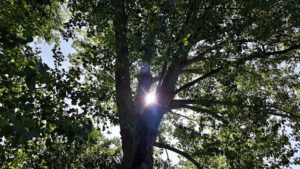
When I’m thinking about planting a live oak, the first thing I consider is where it’s going to go. These trees like a spot that gets full sun. They’re not super picky about soil, which is good, but they do best when the soil drains well. I’ve read they can handle clay or sandy soils, and even some salt spray if you’re near the coast. That’s pretty handy.
Live oaks are generally happy in USDA hardiness zones 8 through 10. They thrive in warmer, humid climates, kind of like what you’d find in the southern United States. They’re not really suited for cooler, mountainous areas. If you’re in a place with mild winters and hot summers, you’re probably in a good spot.
| Condition | Preference |
| Sunlight | Full sun |
| Soil Type | Well-drained, sandy loam preferred; tolerates most soils |
| Climate | Warm, humid climates (USDA Zones 8-10) |
| Drought | Tolerant once established |
| Salt Spray | Tolerant |
It’s important to remember that while they’re tough once they get going, giving them the right conditions from the start really helps them establish. I’ve found that providing good drainage is key, even if they can tolerate other soil types. They can grow quite a bit each year, especially when they’re young and in ideal conditions, sometimes up to 2.5 feet annually. It’s good to know they’ll eventually become quite drought-tolerant, but I always make sure to water them well when they’re first planted. You can find more information on oak tree care if you need it.
How to Grow Live Oak Trees: Step-by-Step Guidelines
When I decided to plant a live oak, I wanted to make sure I did it right. It’s not like planting a small flower; this is a tree that could be around for generations. So, I did some digging to figure out the best way to get it started.
First off, picking the spot is a big deal. You want somewhere with plenty of sun. I also learned that well-drained soil is key, and while they can handle some less-than-ideal conditions once they get going, starting them off right makes a difference. I made sure to avoid areas too close to buildings or power lines, and also kept them away from other plants that might compete for water and nutrients. It’s a bit of a balancing act, really.
Here’s a breakdown of how I went about it:
- Prepare the Hole: Dig a hole that’s wider than the tree’s root ball, but not necessarily deeper. The goal is to give those roots room to spread out sideways. I aimed for about twice the width of the root ball.
- Position the Tree: Gently remove the tree from its container. If it’s a bare-root tree, spread the roots out evenly. Place the tree in the center of the hole. The most important thing here is to make sure the root flare – where the trunk widens at the base – is just slightly above the soil line. Burying this part is a common mistake that can cause big problems later on.
- Backfill and Water: Fill the hole back in with the soil you removed. Gently firm it around the roots to get rid of air pockets. Then, give it a good, thorough watering. This helps settle the soil and gets moisture to the roots.
- Mulch: Add a layer of mulch around the base of the tree, keeping it a few inches away from the trunk itself. This helps keep the soil moist and can also keep weeds down. I used a nice, chunky bark mulch.
- Support (If Needed): For younger trees, especially in windy areas, I considered adding a stake or two. If you do stake it, use flexible ties and remove the stakes after about a year. You don’t want the tree to become dependent on them.
I found that using some soil from under an established oak tree to mix into my planting hole was a good tip. It’s supposed to help give the young tree a boost and get it used to the local soil conditions. It felt like a natural way to help it settle in.
After planting, the real work is keeping it watered until it’s well-established. I checked the soil moisture regularly, especially during dry spells. It’s tempting to fertilize, but I read that it can actually harm young oaks by causing rapid growth that makes the bark weak. So, I held off on any feeding for the first couple of years. Patience is definitely a virtue when growing these trees; they take their time to get going, but the payoff is a magnificent shade tree.
Watering and Mulching Strategies When Growing Live Oaks
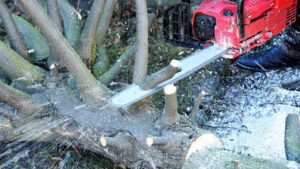
When I first started thinking about planting a live oak, I figured watering would be straightforward. Turns out, there’s a bit more to it, especially when the tree is young and trying to get established. For the first year or so, I’ve learned it’s best to water it regularly, making sure the soil stays moist but not waterlogged. I usually check the soil by sticking my finger in about two inches deep; if it feels dry, it’s time for a good soak. Once the tree is a bit older and has settled in, it becomes much more forgiving and can handle drier spells well on its own.
Mulching is another thing I’ve been paying attention to. I spread a layer of about two to three inches of organic mulch, like wood chips or shredded bark, around the base of the tree. The key is to keep the mulch a few inches away from the trunk itself. This prevents moisture from getting trapped against the bark, which can lead to rot or attract pests. Mulch really helps keep the soil temperature more even and holds in moisture, so I don’t have to water quite as often, especially during those hot, dry summer days. It also helps keep weeds down, which is a nice bonus.
Here’s a quick rundown of what I’ve been doing:
- Initial Watering: Water deeply right after planting to settle the soil around the roots.
- Establishment Phase (First Year): Water deeply once or twice a week, depending on rainfall and soil moisture. Aim for consistently moist, not soggy, soil.
- Mature Trees: Water deeply during prolonged dry periods, but they are quite drought-tolerant once established.
- Mulch Application: Apply a 2-3 inch layer of organic mulch around the tree, keeping it a few inches away from the trunk.
I’ve found that paying attention to these watering and mulching details early on makes a big difference in how well the tree takes hold and starts growing. It’s like giving it a good start in life, you know?
Pruning, Training & Structural Support for Young Live Oak Trees
When I’m working with young live oaks, I’ve learned that a little bit of pruning early on can make a big difference later. It’s not about hacking away; it’s more about guiding the tree as it grows. My main goal is to help it develop a strong, single trunk, often called a central leader. I look for branches that are growing too close together or ones that form a narrow angle with the trunk – these can be weak spots. Removing them when the tree is young is much easier and causes less stress.
I try to prune for structure in the first few years after planting. This usually means taking out any competing leaders to ensure there’s one dominant trunk. I also remove branches that are growing downwards or crossing other branches. It’s important to make clean cuts just outside the branch collar.
Here’s a general idea of what I focus on:
- Establish a single leader: I select the strongest, most upright branch to be the main trunk and remove any others that are growing in a similar direction.
- Improve branch spacing: I aim for branches that are well-distributed around the trunk, not clustered too closely together.
- Correct narrow angles: Branches that attach to the trunk at a sharp angle (less than 45 degrees) are more prone to breaking. I remove these if possible.
- Remove crossing or rubbing branches: These can create wounds that invite disease.
The timing of pruning is important, especially with live oaks. I avoid pruning during the late spring and early summer months. This is typically when certain insects that can spread diseases like oak wilt are most active. Pruning during the dormant season, like late fall or winter, is generally safer.
For structural support, especially in windy areas or if a young tree seems a bit wobbly, I might use stakes. However, I’m careful not to leave them on for too long, usually just a year or two, and I make sure the ties are loose enough not to girdle the trunk. It’s all about giving the tree a little help to stand straight while its root system develops.
Common Pests, Diseases & Problems to Monitor in Live Oaks
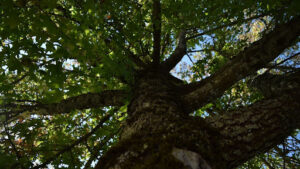
While live oaks are generally tough trees, I’ve learned that keeping an eye out for a few common issues is part of good care. It’s not usually a big deal, but being aware helps me catch things early.
One thing I’ve noticed is powdery mildew. It looks like white dust on the leaves, especially when it’s humid. It doesn’t usually kill the tree, but it can make it a bit weaker over time. I try to manage it by cleaning up any fallen leaves, as that can help reduce the spread.
Another problem I’ve read about is root rot. This is more serious and can actually kill the tree. It usually happens when the soil doesn’t drain well or if I water too much. So, making sure the soil drains properly is important, and I try not to overwater, especially after the tree is established.
Insects can also be a nuisance. I’ve heard about oak borers and caterpillars that can cause damage. Regular checks of the bark and leaves are a good idea to spot any signs of these pests. If I find them, I’ll deal with them right away to prevent them from causing too much harm.
Oak wilt is something I’m particularly careful about. It’s a fungal disease that can be quite serious. The best way to avoid it is to be smart about pruning. I make sure not to prune between March and July, as this is when the trees are most vulnerable to the insects that spread the disease. Also, I always clean my pruning tools after use to avoid spreading anything.
Here’s a quick rundown of what I look for:
- Powdery Mildew: White powdery spots on leaves, common in humidity.
- Root Rot: Wilting, yellowing leaves, often due to poor drainage or overwatering.
- Insect Pests: Look for holes in bark, chewed leaves, or visible insects like borers or caterpillars.
- Oak Wilt: Wilting leaves, dieback, and leaf discoloration. This is the most serious one to watch for.
Long-Term Growth Care: Maintaining Health & Longevity
As my live oak matures, I’ve found that its needs shift. While it’s become more resilient, I still make it a point to check on it regularly. This isn’t anything complicated; usually, it just involves a quick walk around the base, looking at the leaves and the bark. I’m keeping an eye out for any odd spots or discoloration, which could signal a problem early on. If I spot anything concerning, like loose bark or unusual patches, I try to address it right away. Sometimes, it’s just a small area that can be cleaned up, but it’s better to catch things before they spread.
Pruning is something I do, but I’m careful about it. I only trim branches that are clearly dead or damaged. It’s tempting to shape it more, but I’ve learned that removing too much, especially branches that get a lot of sun, can actually harm the tree. The timing is also important; I avoid pruning between March and July because that’s when insects, like bark beetles, are most active and can cause real damage.
I also continue to mulch around the base. It really helps keep the soil moist, especially during drier spells, and cuts down on weeds that might try to steal nutrients.
My approach to long-term care is mostly about observation and gentle intervention. It’s less about constant work and more about being aware of what the tree might need as it gets older.
Here’s a quick rundown of what I focus on:
- Regular Inspections: A visual check of leaves and bark for any signs of distress or disease.
- Mindful Pruning: Removing only dead or damaged branches, and only during the appropriate seasons.
- Consistent Mulching: Maintaining a layer of mulch around the base to conserve moisture and suppress weeds.
- Watering Adjustments: While mature oaks are drought-tolerant, I still provide supplemental water during extended dry periods, especially if the winters were dry.
It’s a rewarding process, watching this tree grow and knowing I’m helping it thrive for years to come. If I ever feel unsure about something, I might consult with a certified arborist, just to get a professional opinion on how to best care for my live oak tree. It’s a long-term commitment, but the benefits are well worth the effort.
Want your trees to live a long and healthy life? Taking care of them now can help them stay strong for years to come. Learn the best ways to keep your trees healthy and vibrant. Visit our website today to discover more!
Frequently Asked Questions
When is the best time to plant a live oak tree?
I find that the ideal time to plant a live oak depends on where you live. In warmer areas like South Florida, planting during the summer is great because there’s plenty of rain and humidity. For places with cooler weather, fall is usually the best season to get your tree in the ground. It’s always a good idea to check with your local agricultural extension office to see what they recommend for your specific area.
What kind of soil and sunlight do live oaks need?
While live oaks really like full sun and soil that drains well and has some sand, they are tough trees. I’ve seen them do well in drier, more packed soils, too. They can even handle a bit of shade once they get established. They’re also quite tolerant of salty air, which makes them a good choice for coastal areas.
How much water does a young live oak need?
When I’m caring for a young live oak, I make sure to water it regularly until its roots are well-established. This usually means watering it often, especially during dry spells. Once the tree is settled in, it becomes much more drought-tolerant, but consistent watering in the early stages is key for strong growth.
How and when should I prune my live oak?
It’s important for me to prune live oaks when they are young to help them grow strong. I usually prune them every year for the first three years, and then every five years after that until they are about 30 years old. This helps shape the tree, gives it space to grow, and can prevent damage from storms. I always avoid pruning in late spring and early summer because that’s when insects that spread oak wilt are most active.
What are common problems I might see with live oaks?
For the most part, live oaks are pretty resistant to pests and diseases. I might occasionally see things like leaf blister or powdery mildew, but these usually don’t cause much harm. The main concern I watch out for is oak wilt, a serious disease that can be fatal. It’s spread by insects and contaminated tools, so I always clean my pruning equipment. Removing any infected trees is the best way to handle it.
Should I fertilize my live oak sapling?
I’ve learned that it’s generally best not to fertilize young live oaks. While it might seem like a good idea to help them grow faster, fertilizer can actually cause rapid growth spurts that might lead to bark splitting or make the tree more likely to attract insects and diseases. I usually wait at least two years after planting before considering any fertilization.

